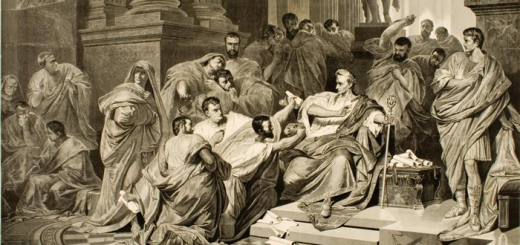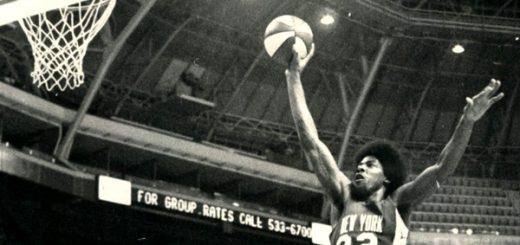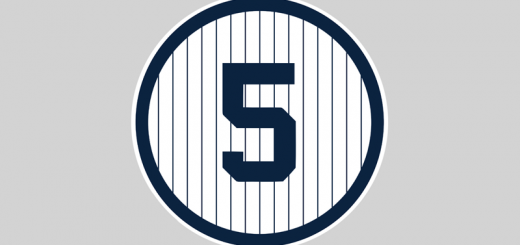Urban Legend
The Game
Ohio State won the first, official national championship playoff game over the Oregon Ducks by a score of 45 to 20. It was going to be a match up of Oregon’s fast break spread offense, that I like to call “The Express,” against the very physical, but more traditional and balanced type of team that was Ohio State. Would Oregon be able to move up and down the field and score at will? Would similarly high powered offense of Ohio State (who put a 59 to 0 spanking on Wisconsin) be able to maybe score just as much as the high powered Ducks? Who would be better equipped (and coached) to be able to play defense and stop the other team?
Ohio State answered all of that by establishing that they could run the ball with Ezekiel Elliot any time, any way, for any amount of yardage they wanted. They could also pass the ball effectively too. When Oregon could rush the passer and make quarterback Cardale Jones have to run, he seemed to do that well also. So Oregon, who thought THEY were the unstoppable force, was actually the team that needed to do all it could to keep up with THEIR opponent. And they couldn’t. Their receivers dropped key passes. Their Heisman QB Marcus Mariota missed on some throws. Their defense was rendered completely impotent, even though they were handed FOUR TURNOVERS by Ohio State. Ohio State’s offensive and defensive lines were better than their counterparts from Oregon. The game was won in the trenches.
Oregon has one flaw they are going to have to fix before they will ever win a championship. They CANNOT run a shotgun spread offense inside the five yard line (or inside the two or one yard lines) of a good opponent and expect to be able to run the ball in. If a team can’t have the threat of a quarterback sneak, or a quick hitting handoff to a fullback, they are prime candidates to fail against good, physical defenses. That means being able to have a quarterback line up directly over the center and work the offense from there. They have been stopped against teams like Stanford and now against Ohio State by that exact lack of physical play. Oregon can be scary good on offense and beat up on the lesser teams, but, they CAN be stopped by the elite teams. On this night, their lack of physicality was exposed.
The better team, coached by the better coach, won. Simple as that.
***********************************************
The Legend
When Bowling Green University hired Urban Meyer in 2001 for his first college head coaching job, they didn’t know for sure exactly what they would be getting. They knew that assistant coaches that work at major programs and then go on to coach at smaller universities are a dime a dozen. They knew that their “bottom of the MAC” school was about as bad as it could get, after their 2 and 9 record in 2000. What they didn’t know was that what they got turned out to be a miracle worker, a brilliant coach and the early 1.0 version of a man that would later turn into the stuff of legends.
Urban Meyer turned the 2 and 9 Bowling Green program, which would have had mostly the earlier coach’s lousy recruits still on the team, completely around, with a startling 8 and 3 season. He followed that season up in 2002 with another sterling record, this one a 9 and 3 season. So, after 17 wins and only 6 losses, Meyer was a red hot coaching commodity, and, as most coaches in his situation (coaching at a small school) are apt to do, he left to coach somewhere else, with his somewhere else being the University of Utah..
Utah was 5 and 6 before Urban Meyer arrived for the 2.0 version of his career. In 2003, he quickly did for them what he did for Bowling Green. He coached brilliantly, he turned things around again, and led the Utes (then still a member of the Mountain West Conference) to a 10 and 2 record and a win in a bowl game. The Sporting News named him their national coach of the year in 2003 for a season that was not even as good as his next year’s team.
The 2004 Utah team (led by future 49er and KC Chief quarterback Alex Smith) was unbeaten, ending up 12 and 0 after a BCS win in the Fiesta Bowl over Pitt, the first time a non major conference team made it to one of “the big boy bowls.” Two years at Utah, and Urban Meyer had added to his coaching mystique with a sparkling 22 and 2 record. Now that he’d proven he could coach with the “big boys,” he was offered one of the best jobs in football (for much, much more money), coaching the Florida Gators.
Florida in 2004 was not as bad as Urban’s two earlier programs, but for Florida, they were a sub par SEC team at 7 and 5. In 2005, Meyer’s 3.0 coaching version turned a 7 and 5 disappointing team into a 9 and 3 team (with an Outback Bowl victory) that was definitely on the way back to national prominence.
Year Two of Urban Meyer at Florida brought the Gators, with their spread offense, ALL THE WAY to the top (13 and 1 record) as Florida made it to the BCS National Championship Game, where Meyer worked his big game magic again and led the Gators to the national title over the Jim Tressel led Ohio State Buckeyes.
Two years later, Meyer’s 2008 Gators, now led by quarterback Tim Tebow, reached the BCS final game again, and once again, Florida won the BCS championship, this time over the Oklahoma Sooners. Two national titles in three years, and Urban Meyer was being talked about as if he was now the best coach in college football. His 3.0 coaching effort was going off like gangbusters.
The following year, the Gators were unbeaten and ranked number one during the regular season and made the SEC final against Alabama, but lost to the eventual champion, but won the Sugar Bowl, and finished number 3 in the country. Meyer and Florida were national powers, but the stress took its toll on his health and he became a victim of off and on health maladies that made him take leaves of absence and actually saw him announce his retirement. After a 2010 win in the Outback Bowl, Meyer stepped down from the Florida job. Urban Meyer 3.0 was over. 65 and 15 in the difficult SEC, with two national titles. He was already the stuff of legends and there was even more to come.
But after one year off of the coaching grind, Meyer regained his health and got his dream job, coaching the Ohio State Buckeyes, which was truly one of the five dream jobs in all of college football. Ohio State was only 6 and 7 in 2011 and Meyer was inheriting the mess at OSU left by Jim Tressel. Urban Meyer 4.0 had to begin with the school under probation. So, all he did was go 12 and 0 in 2012. Because Ohio State was on probation, they were not eligible to be ranked, to go to a bowl game, or to play for a championship. Historians can now look back at that team and wonder things like, “just how good were these guys?” As in, hey, they WERE unbeaten.
The next year (2013) was a blase Urban Meyer year of a 12 and 1 regular season record, but with an Orange Bowl loss. Ohio State considered it a pretty good (as disappointing years go) year. But, their resurgence (and Urban Meyer’s recruiting skills) was starting to get them prime 4 and 5 star recruits and, maybe, a team that could now compete with the big, bad SEC.
And then came 2014. The Buckeyes lost a game early and never seemed like they would ever make it to college football’s first four team playoff. But, an improving Ohio State team, and the good fortune of “winning out” over TCU and Baylor, barely got the Buckeyes into the four team playoff, along with Alabama, defending champion Florida State and Oregon. Meyer first led his team to an upset over Bama, and then, the following week (just last night), the Buckeyes convincingly beat down the Oregon Ducks and won the championship. ANOTHER championship for a coach who upped his career record to an incredible 142 and 26 over four different schools.
Urban Meyer has now won three championships during the last nine years. His name is right up there with the Pete Carrolls, the Tom Osbornes, the Nick Sabans. Multiple championship winners. In fact, you roll other names off the tongue… Bear Bryant, Knute Rockne, Pop Warner… and then say, Urban Meyer, and you have a name that even sounds like the LEGENDS of the game. Because, that is what this coach, who is only 50, has become.




